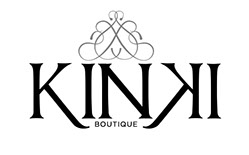- ASIAN -
I was recently asked about the possible difficulties in dealing with ethnic hair types, specifically with the hair of those persons of Asian descent. Asian hair is generally very straight, coarse, and often resistant. This means that the hair can be difficult to work with for those individuals who lack the experience in dealing with the hair of this type.
Most hairdressers when learning their trade deal with a limited variety of hair types, depending upon the setting in which they study and practice. In a school environment, this is often a matter of dealing with manikins whose hair has been treated to provide uniform texture and response to styling techniques. If the hairdresser trained in a salon setting with ethnically diverse clientele, then odds are that he or she will have had some experience in dealing with different hair types.
Furthermore, most stylists are trained to deal with the specific needs of different hair types, and learn to adjust their styling techniques according to the specifics of the individual’s hair. In the case of Asian hair, someone who works with Asian hair types exclusively will be more adept at styling Asian hair. And some people feel that having an Asian hairstylist is the best means of insuring that you get great service as an Asian, but this isn’t a necessity.
Let’s look at the challenges you might face in dealing with Asian hair, and discuss how to adapt your styling techniques to maximize your results. We’ll deal with the areas of Cut, Color, and Styling. We’ll outline the potential problems, and offer solutions.
- CUTTING ASIAN HAIR -
Since most Asian hair types are very straight, many Asian individuals opt for linear cutting lines and styles that use blunt cutting. Layering is generally done as beveling and tapering of the edges to remove bulk and keep the hair looking sleek and smooth. This doesn’t mean that Asian hair types shouldn’t be layered. On the contrary, many Asian individuals have facial shapes that call for layered cuts to add or remove volume in different areas of the head to provide a flattering silhouette.
The texture of Asian hair means that most of these layered cuts will need specific styling to help boost the volume in the desired areas. We’ll get into this in the section on styling. For now, just know that the general rules of esthetics apply in dealing with Asian individuals and their hair the same way they apply to anyone. An Asian individual with coarse, thick hair might need more tapering and respond better to layered styles than an Asian individual whose hair is fine and/or thin*. For those with fine/thin hair, tapering should be minimized and the cut should generally be kept blunted with cleaner, sharper cut lines.
{*Note that in the use of terms like coarse and fine, thick and thin, we are discussing two separate traits of the hair. Coarse and fine refer to the size of the individual hair shafts, while thick and thin refer to the density of the hair and the number of hairs per square inch on the scalp.}
- STYLING ASIAN HAIR -
When it comes to styling Asian hair types the same factors that are key in cutting the hair are doubly important to consider in styling. We mentioned the styling facet earlier as we discussed cutting the hair in layered styles and adding volume to Asian hair: this can be done a variety of ways with the traditional techniques that are used. However, sometimes you will encounter Asian hair that is hard to style and lacks what we generally refer to as “body”.
- BODY WAVING ASIAN HAIR -
In these cases, you might consider a chemical service known as a “body wave” which is basically a “large curl perm” where the wrapping tools don’t create actual curl, but rather a bend in the hair. In cases where the hair lies flat to the scalp, making sure that the rollers are set fully “on-base” will help to instill some lift at the scalp area and more volume in the hair overall.
The benefit of a body wave for the more problematic Asian hair types is that it opens the cuticle layer and allows some friction between the hair strands, allowing you to style the hair with traditional techniques to better results. Most stylists find that a body wave will allow them to heat style and roller set Asian hair that previously wouldn’t hold curl for longer than several minutes.
In cases where chemical services aren’t necessary, the texture of Asian hair may require you to use higher heat settings to get the same results. Furthermore, if the hair is also thick, be sure to avoid overloading your appliance. Instead, work with small segments of the hair to ensure full heat penetration, and allow the hair to cool completely before further manipulation.
- COLOURING ASIAN HAIR -
Coloring Asian hair presents its own special challenges, because the natural color of virtually every Asian hair type is the darkest possible level and hue. In order to get any other color in Asian hair you nearly always must lighten the natural color first. This can be extremely damaging to the hair’s integrity if not done carefully.
It has been theorized that the uniformity of Asian hair color and the difficulties inherent in changing the color is the reason for the prevalence of brightly-colored hair in Asian animated characters. However, in most cases, live individuals who have hair of similar color have employed hairpieces, or undergone very stringent color processing in order to achieve the colors.
For instance, the young Asian woman who wants her hair to be a bubblegum pink must first bleach the hair to lift the color to as pale as possible before applying the shade of pink desired. Given the amount of color that must be dispersed in this lightening process there is a strong risk of losing sufficient protein in the hair structure that the new color won’t hold (and won’t last long if it does take). In these cases, the use of protein additives are needed and can help achieve the color desired.
Of course, a lot of women of Asian descent (not to mention others with equally dark hair types) have taken to wearing a color tinting process that gives their hair a reflection of a specific color. In other words, the hair is colored without lightening and given a glossing treatment, so that when the light shines on the hair, the glints of reflected light shine with the desired color. I’ve seen burgundy reds, magenta, lavender, and even bold blue. These color treatments are subtle, yet effective, and are great for those who must maintain a professional image but want some personality reflected in their look.
This is also a great use for color panels where only targeted color panels are created – usually in the interior of the hair – so that only a small portion of the has to undergo drastic lightening and coloring processes and the color panel can be exposed in various styles, hidden when desired, or allowed to “peek” out when the hair is worn loosely. Other targeted color applications are used, too, among those not wishing to expose their entire head of hair to drastic processing.
- OMBRE / BALAYAGE -
These can include techniques in which merely the ends of the hair are bleached and colored, streaks, and even the currently popular Ombre effect where the hair is lightened gradually so that it becomes lighter as you approach the ends of the hair shaft furthest from the scalp. Finally, for those who don’t wish to lighten the hair at all, and who want color application that is temporary and can be removed with a shampoo, many are using the technique called “chalking” where actual chalk is used to apply an opaque color to the hair. In some cases oil pastels are used as they provide a bolder hue (but may need a clarifying shampoo to remove easily).
The chalk/pastel stick is simply rubbed along the length of the hair you wish to color. Because the color is opaque, you can use it without needing to lighten the hair (though the color will be brighter on lighter hair) and because it is only on the surface of the hair shaft, the color can be easily removed by shampooing.
{Pro Tip: If you want the color to stand out more on darker shades of natural color, try spraying the hair with hairspray and allowing the hairspray to dry fully before applying the chalk/pastel color. You may want to give two or three hairspray applications in light misting to avoid clumping, as opposed to saturating the hair with hairspray in one application. The hairspray will act as a sealant and keep the chalk/pastel strictly on the surface of the hair (and allow for easier removal. Furthermore, it will give the hair a texture that the chalk/pastel can adhere to more readily, providing better results.}

The beautiful, healthy hair you have always dreamed of is only one step away…
Simply fill in the form below to book in your free consultation


- KINKI BOUTIQUE -
01603 633 700 - 01603 633 339
5 CASTLE STREET . NORWICH . NORFOLK . NR2 1PB








